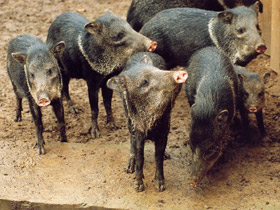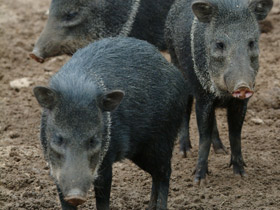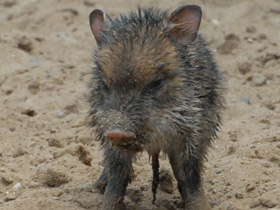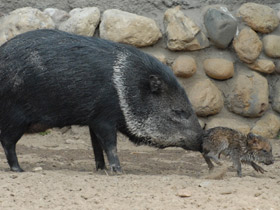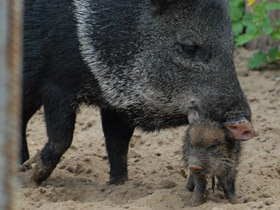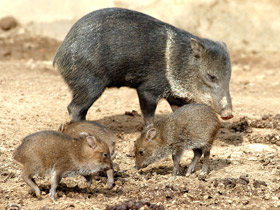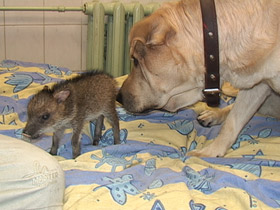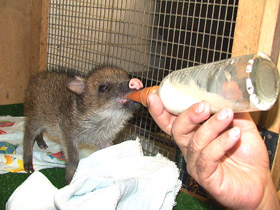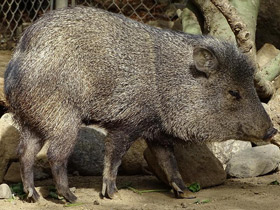Collared peccary Pecari tajacu
The New World pigs family – Tayassuidae
The peccaries resemble pigs; they have large, cuneiform head, short neck, small eyes, slightly rounded ears, short legs, and little tail. However, due to some specific characteristics of the peccaries, zoologists assigned them to a separate family; in the peccaries, the tusks on their upper jaw are short and grow downward rather then upward like what is seen in the pigs; they have only three toes on each of the hind feet; their stomach has three chambers and is more complex than that in the pigs; and they have special scent glands on their lower backs. When the peccary is excited, its hair stands up and uncovered gland sprays its secretion over the tree trunks, bushes, and grass. The secretion (called “musk”) serves as a signal providing important information for other peccaries. The strange location of the gland is quite reasonable considering that peccaries live in marshy habitats – the higher scent marks are located, the longer they will sustain in case of flood.
The collared peccaries (Pecari tajacu) are widely distributed. They occur in Arizona, New Mexico, and Texas in the USA, a large part of Mexico and Central America, the Amazon basin, thePacific coastal forest of Colombia, Ecuador and Peru, the lowland forest of Venezuela and the Guiana, Paraguay, Bolivia, Peru, and northern Argentina. These animals have close social relationship; they live in herds of 5 to 15 animals that forage, eat, and sleep together (Photos 1-3). Each herd has its home territory,and both males and females defend its boundaries from outsiders. When fighting, the peccaries bite and hit the adversaries with their tusks. These animals are omnivores feeding on grass, cacti, roots, bulbs, nuts, berries, and mushrooms, and can also eat eggs, carrion, small snakes, and frogs. Their breeding is very productive: gestation lasts less than 5 months, after which 1 to 4 tiny babies are born (Photo 4). The female separates from the herd just before the birth and comes back after one day (Photos 5 and 6). She nurses the piglets only for 2 or 3 months (Photos 7 and 8), and young peccary males reach maturity as early as at 11 months of age, and females, at 8 to 14 months of age. At zoos peccary piglets have sometimes to be removed from the mother for hand-raising (Photos 9 and 10).









